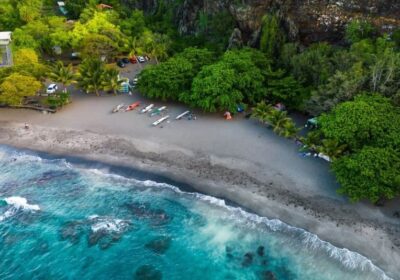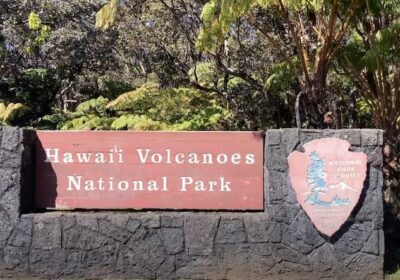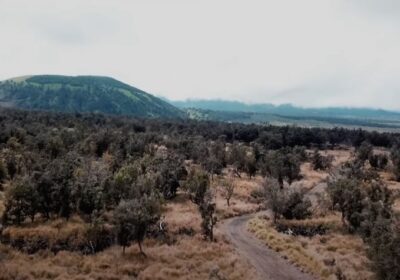Step Back in Time on the Lava Fields of Hawaii
Imagine the heat of the sun dancing off the blackened lava fields, the crunch of volcanic rock beneath your hiking boots, and the vast silence interrupted only by the whispers of the wind. This is Pu’u Loa—a hidden gem nestled within Hawai’i Volcanoes National Park, a place where ancient stories are carved into the land itself. As you approach, the mystery of these symbols unfolds, like reading an ancient book written by those who walked these lands centuries before.
For the traveler on a budget, Pu’u Loa Petroglyphs is the perfect combination of beauty, history, and tranquility without the cost or chaos of crowded tourist attractions. Here, you won’t find towering hotels or guided trams; instead, you’ll embark on a peaceful walk across lava plains, uncovering over 23,000 ancient symbols etched by hand into the earth.
Some say the Pu’u Loa Petroglyphs mark the birth of generations. Others believe they chart spiritual journeys. But one thing is certain: standing here, you’ll feel like you’ve stepped into the past, witnessing the legacy of the Hawaiian people as they communicated through stone.
The question isn’t if you should visit Pu’u Loa Petroglyphs—it’s how soon can you make it there? Let’s dive deeper into what makes this place so special.
The Significance of Pu’u Loa Petroglyphs—A Sacred Record of Hawaiian Life
To understand Pu’u Loa Petroglyphs cultural significance, picture a time when the only way to preserve your story was to carve it into stone. These weren’t just random markings—they were milestones, spiritual prayers, and ancestral roadmaps that connected past, present, and future.
Pu’u Loa, meaning “Hill of Long Life,” wasn’t just a place where people came to leave a mark; it was a sacred site, where they believed carving their symbols ensured blessings, longevity, and protection for their families. As you walk through the petroglyph field, you’ll notice hundreds of small holes, known as puka. These were carved for a specific and sacred purpose: after a child was born, the umbilical cord would be placed into the hole, signifying a connection to the land and invoking protection for the child’s future.
It’s as if the earth itself held the responsibility of nurturing the next generation.
Another common motif is the circle, often connected with dots or lines. These circles can represent everything from family genealogy to spiritual journeys. Think of them like a map of someone’s life, where each circle could symbolize a significant event—birth, a marriage, or a prayer for safe travels across the ocean.
Why Pu’u Loa Petroglyphs Resonate with Modern Travelers
In an era where most of our stories are told through Instagram posts, there’s something profoundly humbling about standing among thousands of ancient symbols etched into the lava. It makes you wonder: what legacy are we leaving behind?
For many, the most profound takeaway from visiting Pu’u Loa Petroglyphs is realizing the simplicity of human connection—how, even centuries apart, we’re still searching for ways to tell our stories and preserve them for future generations.



Journey to the Petroglyphs—The Hike to Hawaii’s Ancient Secrets
When you begin your hike to the Pu’u Loa Petroglyphs, it doesn’t take long to feel the magic of the Big Island’s raw, untamed landscape. The trailhead sits along the Chain of Craters Road within Hawai’i Volcanoes National Park, offering a front-row seat to some of the most dramatic volcanic scenery on Earth. As you lace up your shoes and set out, it’s easy to feel like an explorer discovering secrets hidden within the lava fields.
The hike itself is short and manageable—a 0.7-mile walk (roughly 20-30 minutes each way)—but don’t let the distance fool you. The journey is as much about soaking in the experience as it is about reaching the destination. You’ll traverse hardened lava formations, some smooth and glassy, others jagged and rough, telling stories of past eruptions that shaped this land. The volcanic rock glistens under the sun, creating a surreal landscape that feels almost otherworldly.
A Walk Through Time
As you walk, you’ll notice how the terrain shifts from barren lava plains to clusters of native grasses and shrubs, resilient life finding a way through the cracks. Imagine ancient Hawaiian families making this same trek, perhaps carrying newborns or gathering to perform spiritual ceremonies.
In the distance, the horizon seems to blur into the sea, a reminder of Hawaii’s connection to nature—where land and ocean are in constant conversation. If you’re lucky, you might catch sight of nēnē geese (Hawaii’s state bird) nesting nearby or hear the rustling of ‘ōhi‘a trees, whose vibrant red flowers contrast beautifully against the dark lava.
Best Time to Visit
- Morning Magic: For a truly peaceful experience, start your hike early in the morning, just after sunrise. The soft light casts golden hues over the petroglyph field, creating perfect conditions for photography.
- Evening Tranquility: Late afternoon is another ideal time, especially if you want to enjoy cooler temperatures and avoid the mid-day heat radiating off the lava. Plus, sunset over the lava fields is breathtaking—a moment that lingers long after the day ends.
Stay on the Trail: Respecting the Land
While the urge to wander off and explore the surrounding lava formations can be tempting, it’s important to stay on the designated path. The petroglyphs are fragile, and even a single misplaced step can cause irreparable damage. Signs along the trail gently remind visitors to respect the area, but locals will tell you that the respect goes beyond physical preservation—it’s about honoring the aloha ‘āina (love of the land) that has been passed down through generations.
Travel Tip: Consider joining one of the park’s free ranger-guided tours, where experts share stories about the petroglyphs and their significance. It’s a great way to deepen your understanding while sticking to a budget.
A Moment of Reflection
As you reach the wooden boardwalk that winds through the petroglyph field, take a moment to pause. Here, surrounded by symbols of life, death, and everything in between, you’ll feel a connection that transcends time. It’s not just about seeing the Pu’u Loa Petroglyphs—it’s about feeling their presence, like the echoes of the past still hum beneath your feet.
What will you reflect on during your journey through Pu’u Loa Petroglyphs? Perhaps it’s the resilience of the Hawaiian people, or the idea that life’s milestones—whether carved in stone or remembered in stories—are meant to be shared.

Experiencing Pu’u Loa Petroglyphs Respectfully. Walking in the Footsteps of the Past
As you step onto the wooden boardwalk that leads you through the heart of the Pu’u Loa Petroglyphs, it’s important to remember that this isn’t just a historical site—it’s a sacred space, woven into the cultural and spiritual fabric of ancient Hawaii.
To the casual observer, the petroglyphs may appear as simple carvings, but for Hawaiians, they are living stories that carry the spirit of their ancestors. Respecting this sacred ground goes beyond obeying the signs. It’s about understanding the meaning behind them and approaching the site with humility and reverence.
The Cultural Significance of Respect
In Hawaiian tradition, mana (spiritual energy) exists within people, places, and objects. The petroglyphs at Pu’u Loa hold mana because they represent the prayers, hopes, and memories of generations. To walk among them is to acknowledge this spiritual connection, a practice known as ho’okipa—the act of offering respect and care when entering someone else’s space.
Hawaiians believe that showing aloha ‘āina (love of the land) is an essential part of being a responsible visitor. As you walk the boardwalk, observe the Pu’u Loa Petroglyphs without touching them. Even the oils from human skin can contribute to their deterioration over time.
Leave No Trace
- Stay on designated paths to avoid trampling fragile areas. The lava fields may seem sturdy, but they are more delicate than they appear.
- Pack out what you pack in. There are no trash cans on the trail, so be sure to carry all your belongings (and trash) back with you.
- Avoid loud noises or music. Let the natural sounds of the wind and wildlife create the soundtrack for your visit.
Story Moment: I once led a small group of travelers through the Pu’u Loa Petroglyphs at sunrise, and as the golden light illuminated the carvings, one of the guests quietly said, “It feels like we’re walking through someone’s journal.” That moment stayed with me—it was a reminder of how sacred places have a way of humbling us.
Photography Etiquette: Capture the Memory, Not the Mystery
Taking photos is welcomed, but there’s an unspoken rule among locals: capture with care. Let your photos be a reflection of the experience, not an interruption. Instead of leaning over the carvings for a close-up, consider wide-angle shots that highlight the natural landscape surrounding the Pu’u Loa Petroglyphs.
Pro Tip: Early morning and late afternoon provide the best lighting for photos, casting long shadows that enhance the depth of the carvings.
Respectful Travel Thought: Many travelers leave the Pu’u Loa Petroglyphs with more than just photos—they leave with a sense of responsibility. As you reflect on the lives etched into the lava, consider how you can carry that spirit of respect and cultural preservation forward in your own travels.
Participate in Hawaiian Practices
If you happen to join a ranger-guided tour, you may have the opportunity to witness or participate in small, respectful ceremonies where visitors offer ho’okupu (gifts of gratitude) to honor the land. These aren’t staged performances but genuine acts of reverence.
Even without formal ceremonies, you can quietly offer your own form of respect. Take a moment to close your eyes, take a deep breath, and mentally thank the land and its people for allowing you to witness such a powerful legacy.
Question for Reflection: If you were to leave behind a symbol of your own life, what would it be, and what story would it tell?

Packing List for Your Pu’u Loa Adventure—Essentials for a Budget-Friendly Cultural Hike
Exploring the Pu’u Loa Petroglyphs is a relatively short hike, but the rugged lava terrain and exposure to the elements make it essential to come prepared. With the right gear, you’ll stay comfortable, safe, and able to fully enjoy this cultural treasure without needing costly extras. Whether you’re a seasoned hiker or a casual traveler, this packing list will have you covered.
Sturdy Walking Shoes or Hiking Sandals
This isn’t the time for flip-flops or beachwear. The trail to the Pu’u Loa Petroglyphs is uneven, with hardened lava that can be sharp and slippery in some areas. A good pair of sturdy hiking shoes or sandals with grip will protect your feet and help you navigate the terrain safely.
Pro Tip: If you’re on a budget, don’t worry about expensive gear. A pair of well-worn sneakers with good tread will do the job just fine. Just avoid anything with thin soles that can’t handle rough surfaces.
Lightweight, Breathable Clothing
The Big Island’s volcanic terrain can reflect a lot of heat, making it feel warmer than the actual temperature. Opt for moisture-wicking fabrics that will keep you cool and comfortable.
- What to wear: Lightweight shorts or hiking pants and a breathable t-shirt or tank top.
- Layering tip: Mornings and evenings can be cooler, so bring a light jacket or windbreaker.
Sun Protection: Don’t Underestimate the Lava Field Sun
There’s little to no shade on the trail, which means you’ll be exposed to the sun for most of the hike. Protect yourself from sunburn and dehydration by packing the following:
- Wide-brimmed hat or cap to shield your face and neck.
- Sunglasses to protect your eyes from the sun’s glare off the black lava.
- Sunscreen (reef-safe preferred) to avoid damaging Hawaii’s delicate ecosystems.
Budget-Friendly Suggestion: You don’t need designer sunglasses. Even an inexpensive pair will do as long as they provide UV protection.
Water and Snacks: Stay Hydrated and Energized
One of the golden rules of hiking in Hawaii: bring more water than you think you’ll need. The heat reflecting off the lava can quickly lead to dehydration.
- Reusable water bottle (at least 1-2 liters).
- Electrolyte tablets or powder (optional, but helpful for long hikes).
- Light snacks: Trail mix, granola bars, or fresh fruit are easy, affordable, and give you a boost of energy.
Eco-Friendly Tip: Avoid single-use plastic bottles. Bring a reusable one that you can refill throughout your day.
Small Backpack or Daypack
Keep your hands free by carrying your essentials in a lightweight backpack. It doesn’t need to be fancy—just something big enough for your water, snacks, sunscreen, and extra layers.
Camera or Smartphone
You’ll want to capture the breathtaking views and intricate carvings, but remember to keep your photography respectful.
Photography Tip: Use natural light to your advantage. Mornings and late afternoons cast the most flattering shadows across the petroglyphs.
Notebook or Journal (Optional)
Many visitors find Pu’u Loa to be a deeply reflective experience. If you’re someone who likes to jot down thoughts or sketches, consider bringing a small notebook to capture your reflections.
Inspiration Tip: Try sketching a favorite petroglyph or writing a short note about how it made you feel. It’s a simple way to create a meaningful memory.
Flashlight or Headlamp (If Visiting at Dusk)
If you’re planning to visit during sunset or stay until dusk, bring a flashlight or headlamp to safely navigate back to your car. The lava fields can be tricky to walk after dark, even with the moonlight.
Eco-Friendly Essentials
To leave the area as pristine as you found it, consider packing reusable utensils, cloth napkins, or eco-friendly bags if you plan to have a picnic.
Budget Tip: Reusable items save you money in the long run and help preserve the environment.
First Aid Kit
A small travel-sized first aid kit with band-aids, antiseptic wipes, and pain relievers is a good idea, especially when hiking on uneven terrain.
Final Packing Tip: Travel Light but Smart
The key to enjoying the Pu’u Loa Petroglyphs without overpacking is to focus on comfort and practicality. By bringing the essentials, you’ll be free to immerse yourself in the experience without the burden of excess gear.

Budget-Friendly Travel Tips for Pu’u Loa and Nearby Attractions
The Big Island is often seen as an expensive destination, but you don’t need a big budget to have a fulfilling adventure. A visit to Pu’u Loa Petroglyphs is proof that some of the island’s most meaningful experiences come at little to no cost. With careful planning, you can make this trip even more budget-friendly while pairing it with other nearby attractions to get the most out of your day.
Maximize Your Visit with Hawai’i Volcanoes National Park’s Affordable Pass
The beauty of visiting the Pu’u Loa Petroglyphs is that it’s part of Hawai’i Volcanoes National Park, which offers plenty of value-packed options for travelers on a budget. The entrance fee is relatively low ($30 per vehicle, valid for seven consecutive days), and there are even free admission days throughout the year.
Budget Tip: If you’re planning to explore more national parks during your trip, consider getting an America the Beautiful Pass ($80 annually), which grants access to all U.S. national parks, including Hawai’i Volcanoes.
Free or Low-Cost Ranger Programs
Take advantage of the park’s free or low-cost ranger-led programs, which often include cultural talks, hikes, and even storytelling sessions about Hawaiian history and legends. Many of these programs focus on the petroglyphs and their role in Hawaiian life.
Personal Experience: As a tour guide, I’ve seen how these programs can transform a visitor’s experience. One guest, who thought the petroglyphs were just “ancient doodles,” left the talk with tears in her eyes, saying she’d never look at cultural sites the same way again.
Travel Tip: Check the visitor center’s daily schedule when you arrive to see if there are any free events or guided walks near Pu’u Loa Petroglyphs.
Pack a Picnic Instead of Dining Out
There aren’t any food vendors near the Pu’u Loa Petroglyphs, so bringing your own snacks or picnic lunch is essential. But beyond convenience, this is also a great way to save money and avoid pricey restaurants. Nearby grocery stores or farmer’s markets in Hilo or Pāhala offer local treats like poke bowls, fresh fruit, and taro chips—perfect for a scenic outdoor meal.
Budget Pick: Stop by the Hilo Farmers Market for fresh, affordable produce or grab pre-made bento boxes from a local market before heading out.
Pair Pu’u Loa with Nearby Attractions for a Day Trip
Since the Pu’u Loa Petroglyphs is located along the famous Chain of Craters Road, it’s easy to combine your visit with other nearby sights without spending much more.
- Chain of Craters Road: A scenic drive that takes you through breathtaking volcanic landscapes and down to the coast.
- Holei Sea Arch: A stunning natural sea arch at the end of the road where waves crash dramatically against the cliffs.
- Thurston Lava Tube: Explore this natural tunnel formed by flowing lava (free within the park).
- Kīlauea Overlook: Witness the majesty of Kīlauea Volcano from the overlook, especially dramatic at sunrise or sunset.
Budget Tip: Since most of these attractions are within the park, you won’t need to pay extra for access—just gas for your vehicle and any snacks along the way.
Affordable Accommodations Nearby
If you’re staying on the Big Island on a budget, consider Arnott’s Lodge accommodations that offer comfort without the hefty price tag.
Take Advantage of Local Knowledge
Sometimes, the best travel tips come from the locals. Stop by small businesses or coffee shops and strike up a conversation—they’ll often recommend affordable hidden gems like nearby scenic hikes, small eateries, or cultural sites off the beaten path.
Personal Note: I once had a visitor who was directed by a local to a secluded beach near Pāhala. She spent the afternoon snorkeling and enjoying the peace and quiet without spending a dime. The best experiences often come from word of mouth!
Final Tip: Slow Down and Savor the Experience
Traveling on a budget doesn’t mean rushing from place to place. In fact, taking the time to explore Pu’u Loa Petroglyphs and its surrounding attractions at a slower pace can often lead to the most memorable experiences. Whether it’s watching the sun set behind the sea arch or reflecting on the ancient carvings at the petroglyph field, slowing down allows you to soak in the magic of the Big Island without feeling the pressure of a packed itinerary.

Leave Pu’u Loa with Stories and Memories to Treasure
As you step back from the Pu’u Loa Petroglyphs and retrace your steps across the lava fields, the stories etched into the stone linger in your mind. It’s not just the carvings that stay with you, but the deeper understanding of the people who created them—their hopes, prayers, and legacies, left behind for generations to discover.
The Pu’u Loa Petroglyphs is more than a historical site; it’s a place of connection. Whether you’re marveling at the birth symbols carved by parents seeking blessings for their children or reflecting on the simplicity of life’s milestones, you’ll leave with a sense of awe and a reminder of the shared human experience that transcends time. For budget-conscious travelers, this hidden gem offers cultural immersion without the price tag, making it the perfect adventure for those who seek meaning, not just souvenirs.
So, what will your story be when you visit Pu’u Loa Petroglyphs? Will you reflect on life’s simple joys, the resilience of nature, or perhaps the spiritual connections that tie us to the land and each other? The only way to find out is to experience it for yourself.
When planning your next trip to the Big Island, don’t overlook the magic of Pu’u Loa Petroglyphs. Pack your essentials, take the scenic drive along Chain of Craters Road, and give yourself the gift of discovering one of Hawaii’s most beautiful hidden places. Trust us—this is one adventure that’s worth every step.





